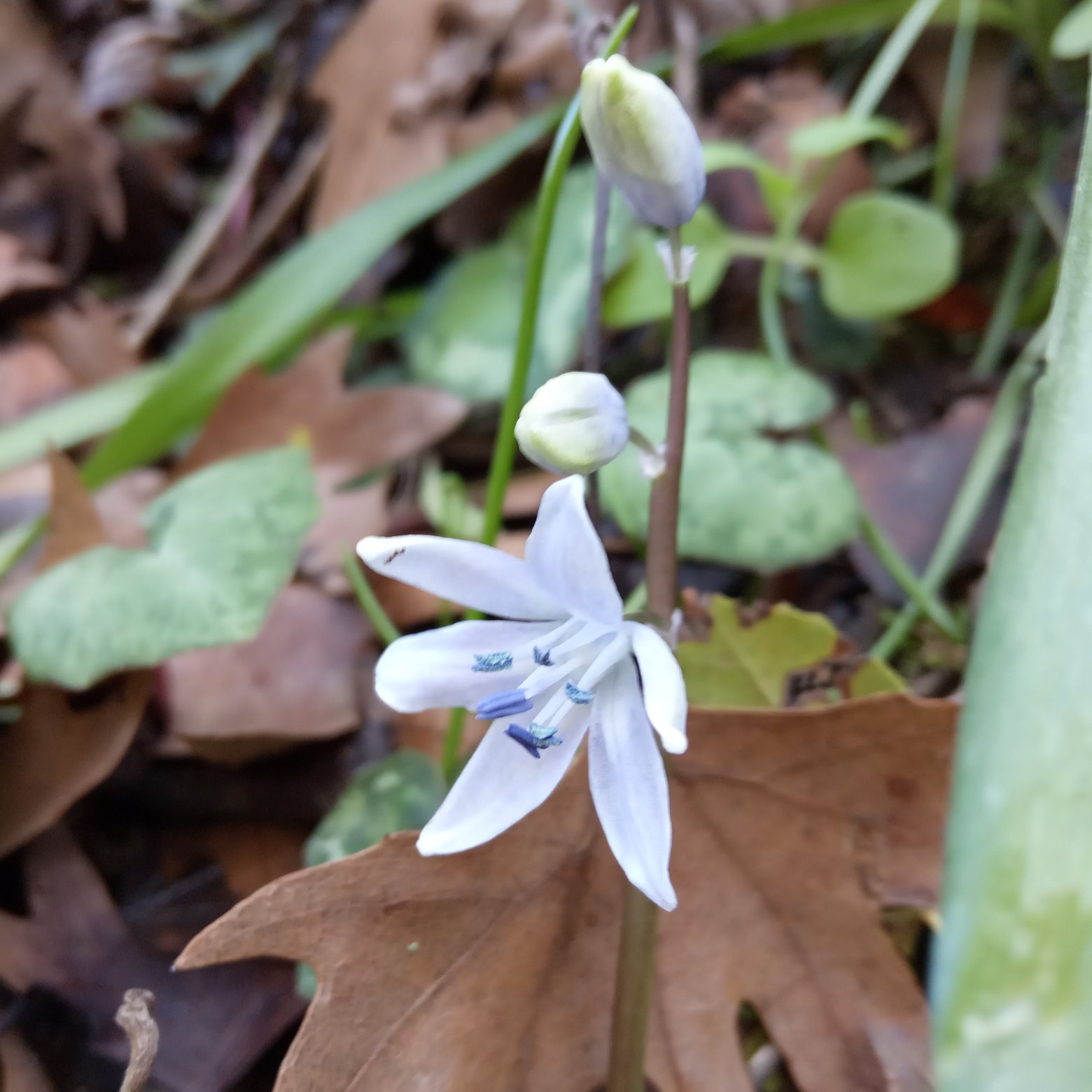Σκίλλα του Μόρρις
Etymology of Scilla morrisii: The genus name "scilla" derives from Ancient Greek "σκίλλα" which means "squill". This Scilla was named "morrisii" in honour of Hubert Meredydd Morris.
There are four Scilla species in the wild Cypriot habitat.
It is an endangered species, vulnerable to extinction, as it is an endemic exclusively growing in Cyprus, hence it is strictly protected. Scilla morrisii is a perennial bulbous herb growing up to 35cm tall, but it is usually seen reaching around 20cm tall. Its flowers are hermaphrodite, and they appear solitary or in lux racemes. Its perianth is campanulate and consists of 6 glabrous segments which are ovate to elliptic, white tinged blue or violet.
Scilla morrisii can be found in some locations, mainly in Paphos district (for example Kritou Terra waterfalls, Agios Neophytos monastery area, Agia Moni monastery area) as well as in northern Cyprus (for example Akanthou village). Scilla morrisii is encountered on the shaded ground under the trees of Quercus infectoria subspecies veneris at an altitude between 25-1000 metres. Its flowering period is between January and April.
How to identify Scilla morrisii:
Scilla morrisii is similar to Scilla lochiae. A main difference is that Scilla lochiae bears flowers with a distinct perianth-tube and Scilla morrisii the opposite.
Scilla morrisii usually has 3 leaves and Scilla lochiae 2.
Scilla lochiae grows on the Troodos Mountains range and the surrounding mountains at a significant altitude of 925–1475 metres.


